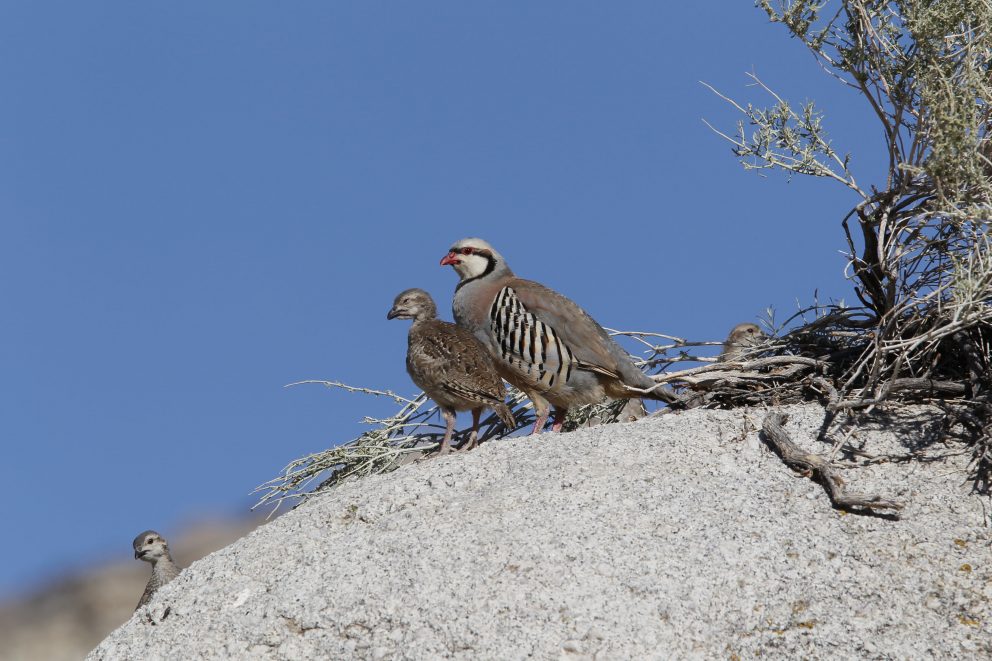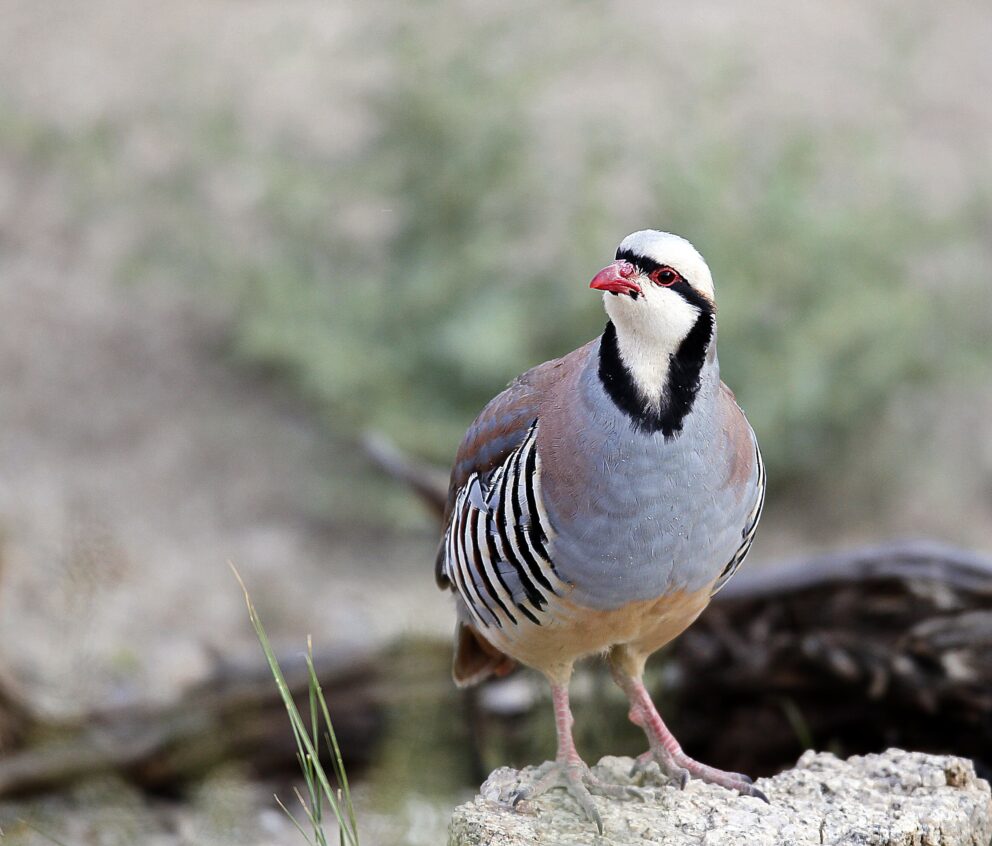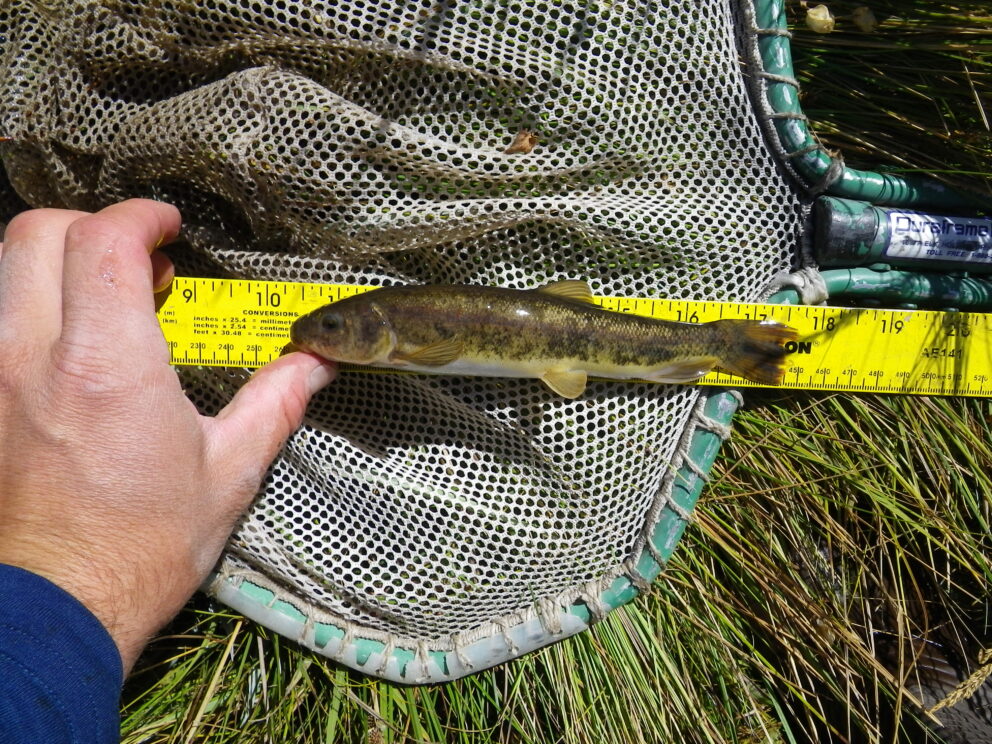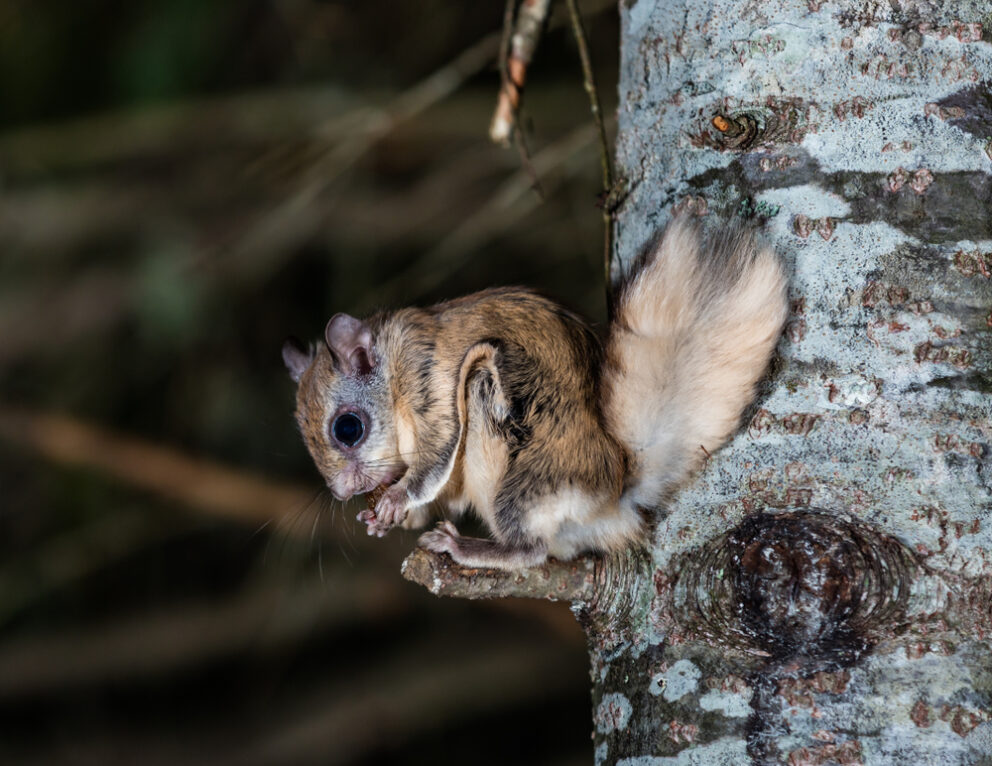- SCIENTIFIC NAME
- Alectoris chukar
- CLASSIFICATION
- Bird
- LIFE SPAN
- 3-5 Years
- SIZE
- 13.4-15” | 1.2-1.7lbs
- STATE CONSERVATION STATUS
-
- State Protected
- FEDERAL CONSERVATION STATUS
- Least Concern
- GAME STATUS
- Game
- GAME TYPE
- Upland Game
- Washoe
- Humboldt
- Pershing
- Churchill
- Mineral
- Lyon
- Douglas
- Carson City
- Storey
- Elko
- Lander
- Eureka
- White Pine
- Esmeralda
- Nye
- Lincoln
- Clark
Habitat & Range
Chukar can be found in dry shrublands often at elevations between 4,000-13,000 feet. They are found among rocky hillsides that have a mixture of plant life including brush and grasses. Chukar are often found close to a water source, especially during the summer.
- Cliffs and Canyons
- Cold desert shrubland and sagebrush
- Grasslands
Threats
- Habitat Loss
Natural History
Chukar are a non-native species that was introduced from Eurasia to the United States in 1893. They primarily eat seeds in their adult life, they also will eat the leaves of both annual and perennial grasses like cheatgrass (an invasive species in Nevada). As young chicks their diet is made up of insects. Chukar can be found nesting on the ground and will hide their nests near rocks or bushes for protection. They have large clutches which will have ten to 21 eggs.
Fun Facts
Instead of bathing in water, Chukars will take dust baths to clean off their plumage.














